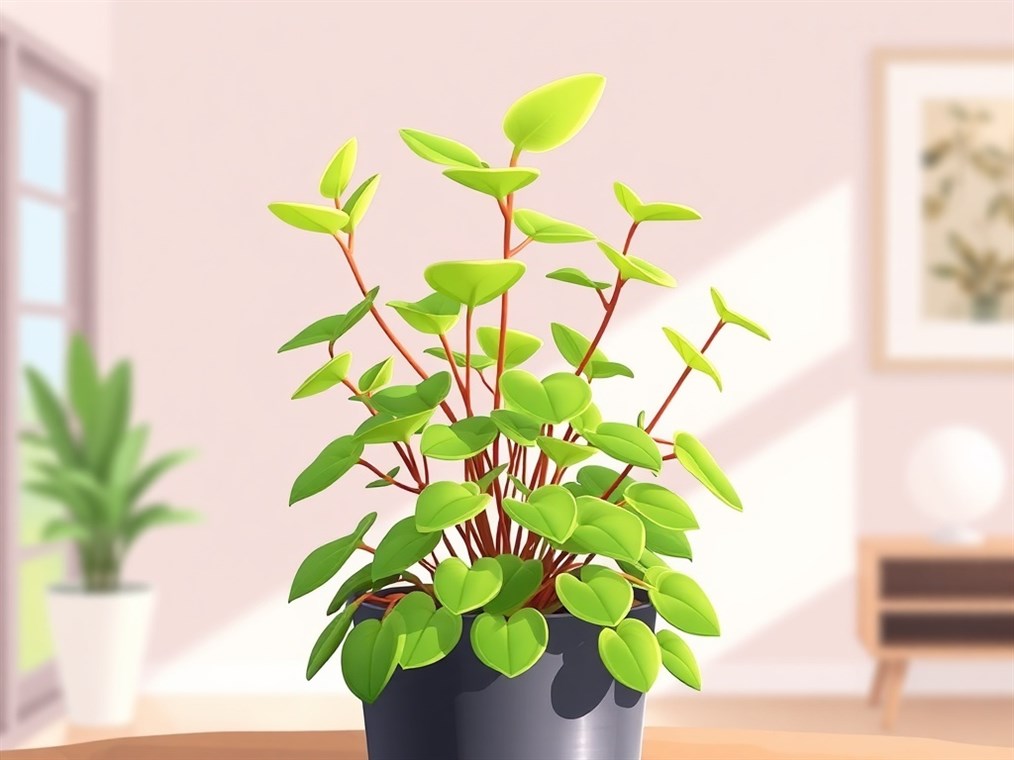The Happy Bean Plant: Your Guide to Keeping This Quirky Houseplant Thriving
Okay, so you’ve got a Happy Bean plant, huh? Awesome choice! These little guys, scientifically known as Peperomia ferreyrae, are seriously cool houseplants. I mean, who can resist those adorable, bean-shaped leaves? They’re like tiny green smiles, and honestly, they’re pretty darn easy to keep happy, which is a win in my book. Originally from sunny South America (Peru to be exact!), the Happy Bean is a champ at adapting to indoor life. Let’s dive into how to make sure yours is living its best life.
Getting to Know Your Bean
First things first, a little intro. You might also hear it called a Green Bean plant or even a Pincushion plant, which, yeah, makes sense when you look at it. Don’t expect a towering jungle beast; they usually max out around a foot tall. And the best part? They’re generally considered safe if your furry friends decide to give them a nibble, though I wouldn’t encourage it!
Light: Finding the Sweet Spot
Happy Beans are light lovers, but they’re not exactly sunbathers. Think bright, indirect light. An east- or west-facing window is usually perfect – imagine that gentle morning or afternoon sun.
Got a super sunny south-facing window? No worries! Just pop up a sheer curtain to soften the rays. Too little light, and your bean might get a bit stretched out and lose its vibrant green color. I’ve even seen them start to look a little sad and droopy. If you’re in a darker spot, a simple grow light can work wonders.
Watering: The Goldilocks Zone
Watering is where a lot of people go wrong, but trust me, it’s not rocket science. The key is to avoid both drowning and dehydrating your little bean.
I usually give mine a drink when the top inch or two of soil feels dry. Stick your finger in there and see! When you do water, give it a good soak until water drains out the bottom. Then, let it be until it’s thirsty again. Pro tip: Less is more, especially in the winter when things slow down. Yellow leaves? Uh oh, probably too much water. Drooping leaves? Thirsty bean!
Soil: Drainage is Key
These guys aren’t super fussy about soil, but good drainage is a must. Root rot is a Happy Bean’s worst enemy, and soggy soil is basically an invitation.
A regular potting mix with some perlite or sand mixed in works great. Or, if you’re feeling fancy, a succulent or cactus mix is perfect. Just make sure whatever pot you use has drainage holes!
Temperature and Humidity: Keeping it Comfy
Think of the kind of temperatures you enjoy – your Happy Bean probably does too!
Anything between 65-75°F (18-24°C) is ideal. Just keep it away from cold drafts or sudden temperature swings. As for humidity, they’re pretty adaptable. If your air is dry, especially in winter, a little misting now and then can make them feel like they’re back in the rainforest.
Fertilizing: A Little Boost
Happy Beans aren’t big eaters, so don’t go overboard with the fertilizer.
A little diluted fertilizer during the spring and summer growing season is plenty. I usually use a balanced liquid fertilizer, diluted to half strength, once a month or so. And definitely skip the fertilizer in the fall and winter.
Pruning: Shaping Things Up
A little trim now and then can keep your Happy Bean looking its best.
If you notice any leggy growth or just want to shape it up, go for it! Spring is the perfect time for a little haircut. Just use clean scissors and snip the stems back a bit. It’ll encourage new growth and keep your plant nice and bushy.
Propagation: Making More Beans!
Want more Happy Beans? It’s surprisingly easy!
Just take a stem cutting with a few leaves, let it sit out for a couple of days to form a callus, and then pop it in water or directly into soil. If you put it in water, change the water every few days. Once roots start to grow, plant it in a pot, and boom, you’ve got a new Happy Bean!
Troubleshooting: When Things Go Wrong
Even with the best care, sometimes things go a little sideways. Here are a few common issues and how to tackle them:
- Yellowing Leaves: Probably overwatering, but could also be a nutrient issue. Adjust your watering and maybe give it a little fertilizer.
- Leaf Drop: Could be too much or too little water, or a sudden change in temperature.
- Leggy Growth: Not enough light! Move it to a brighter spot.
- Brown Leaf Tips: Low humidity or too much fertilizer. Try misting and using distilled water.
- Pests: Keep an eye out for spider mites. A little insecticidal soap or rubbing alcohol usually does the trick.
The Bottom Line
Happy Bean plants are fantastic additions to any plant collection. They’re quirky, relatively low-maintenance, and bring a smile to your face every time you see them. Give them the right light, water, and a little love, and they’ll thrive! Happy growing!

